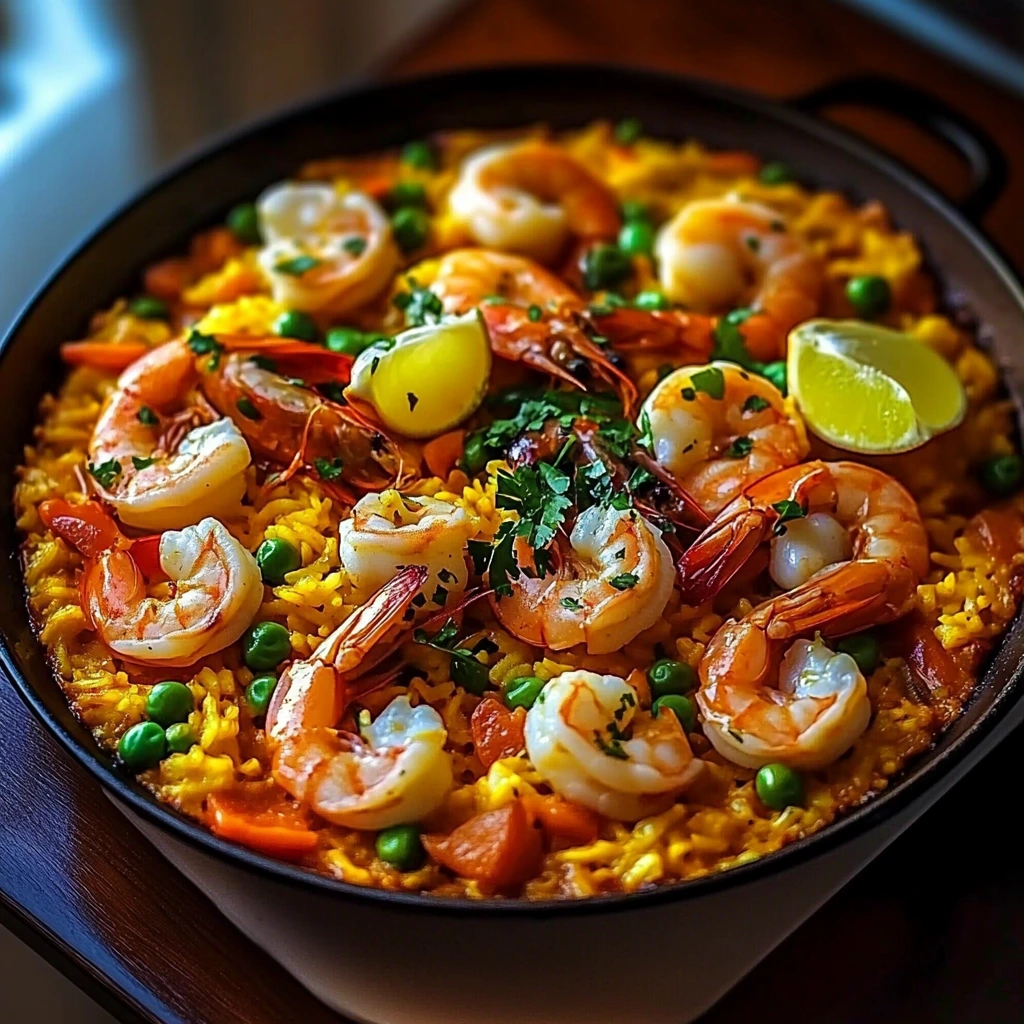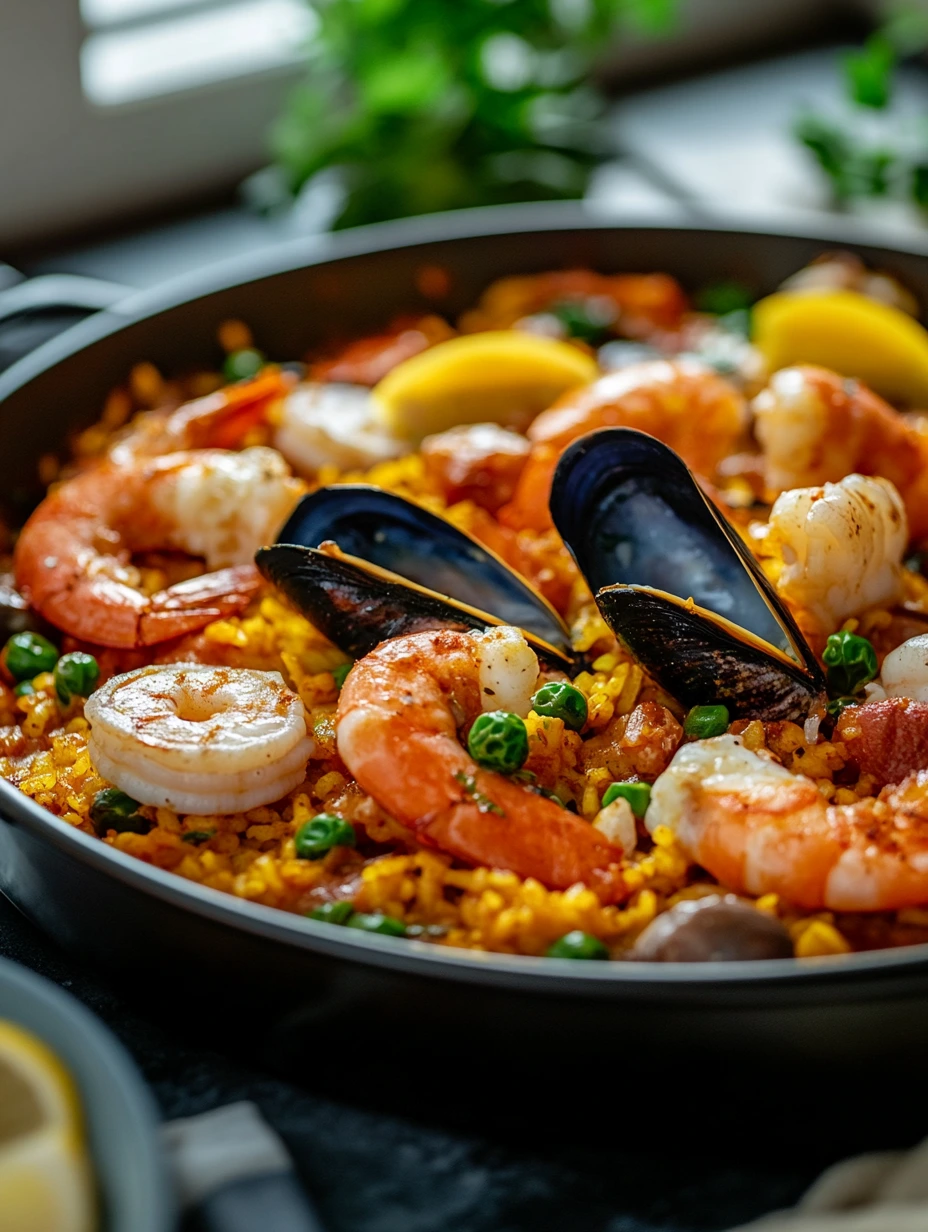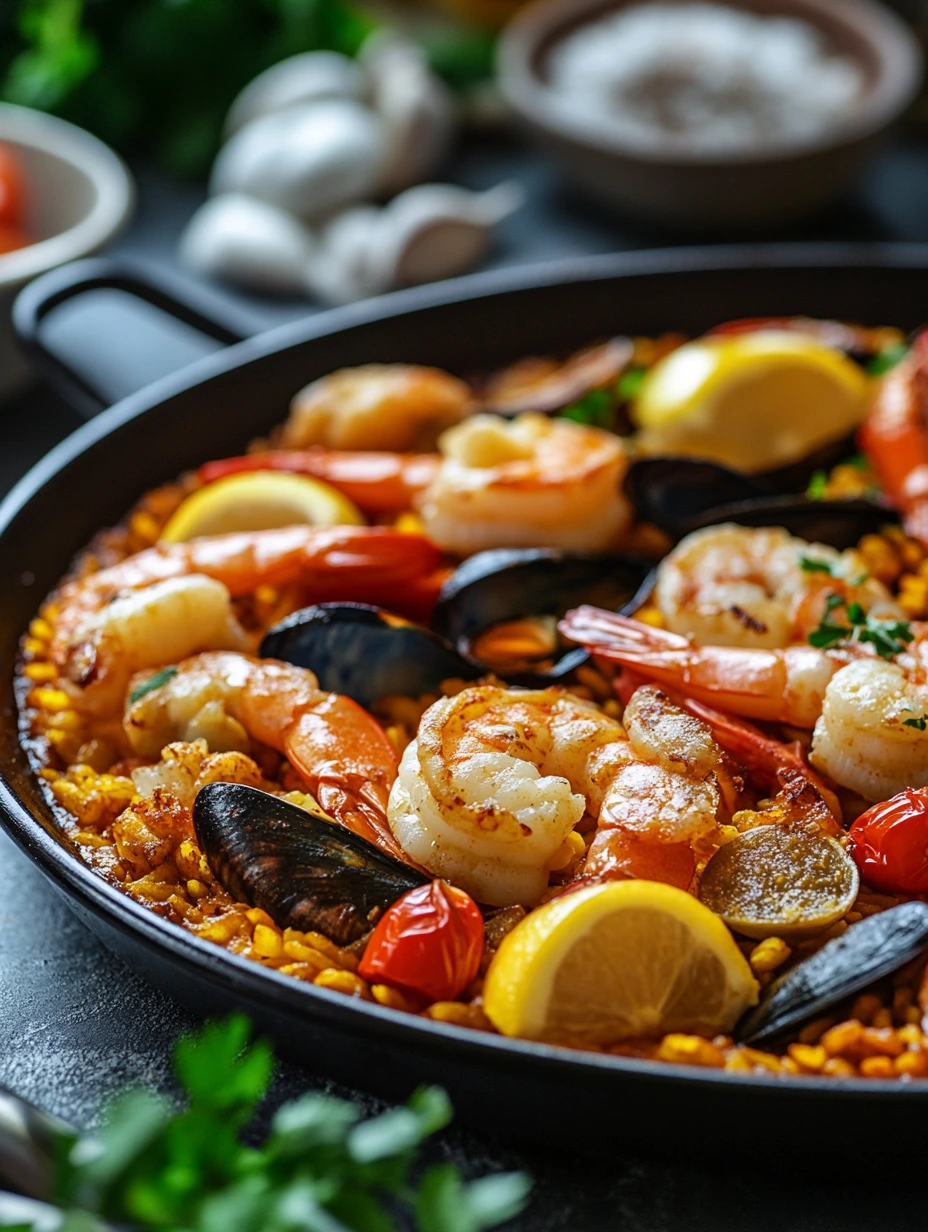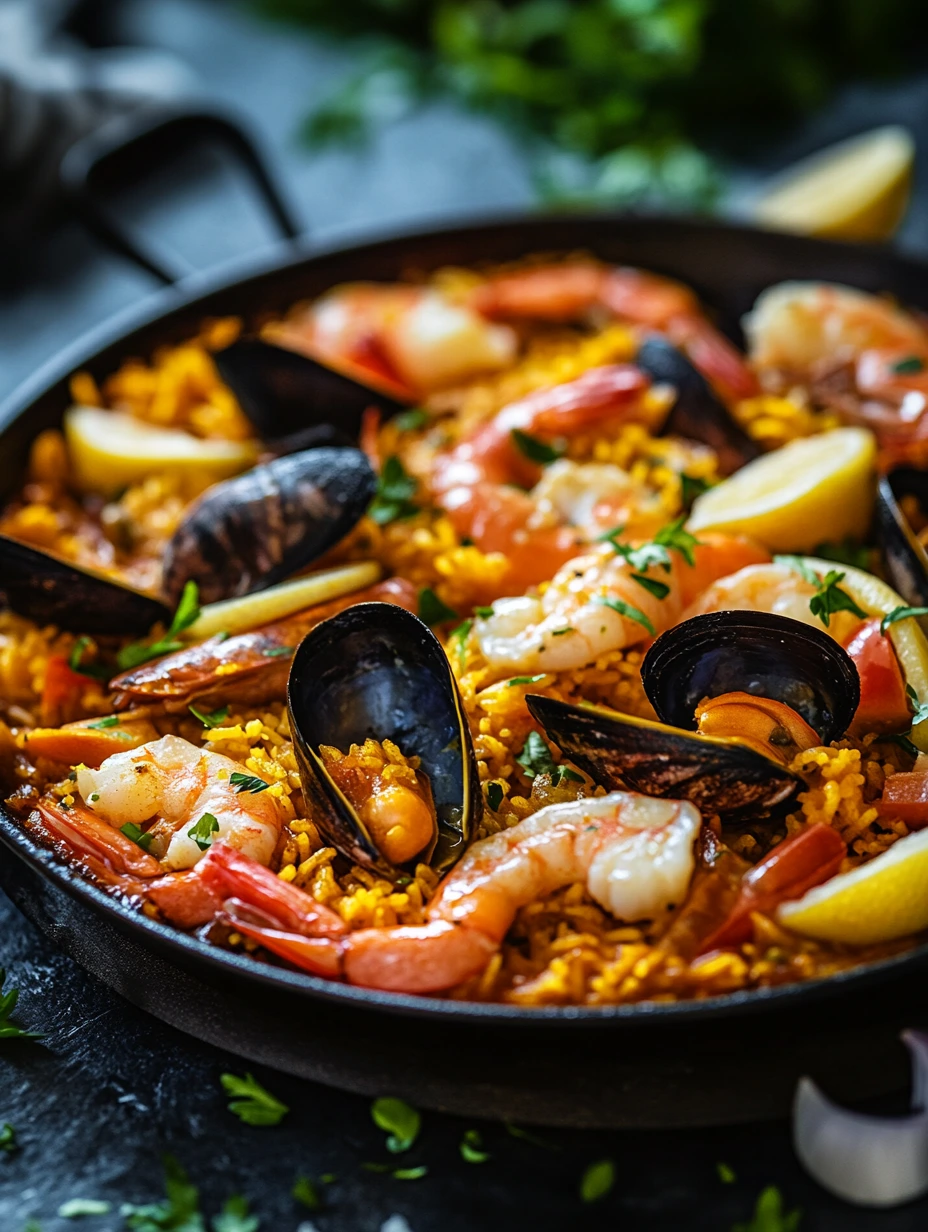 Pin it
Pin it
The Spanish sunshine aroma unfolds in this genuine seafood paella where golden saffron meets the briny treasures of the Mediterranean. This friendly dish with countless flavors instantly whisks your taste buds to Valencia's sunny shores, the birthplace of this iconic meal that's won over tables worldwide.
 Pin it
Pin it
Outstanding Ingredients
- Bomba or arborio rice: they soak up all the broth flavors amazingly while staying firm and not sticky
- True saffron: grab quality saffron, those precious red threads bring the signature golden color and a unique subtle flavor nothing else matches
- Smoked paprika: also called pimentón, it adds that deep Spanish flavor that totally changes the dish
- Fresh seafood: always go for freshness you can spot by a light, nice sea smell, never strong or unpleasant
- Homemade fish stock: if you can, make it with shrimp shells and heads for flavor that can't be beat
 Pin it
Pin it
The flavor symphony
- Waking up flavors
- In a hot paella pan, pour olive oil and cook finely chopped onion until see-through. Toss in minced garlic and red pepper strips without browning them. These aromatics make the flavor base that'll season your whole dish.
- Rice blend
- Sprinkle rice into this aromatic bed and stir for a few minutes to coat it with oil until it looks slightly clear. This step seals the grains and lets them slowly release starch while keeping great texture. Then add smoked paprika which should toast briefly without burning to develop its flavor.
- Saffron infusion
- Pour in crushed tomatoes then the broth where you've already soaked those precious saffron threads. The hot liquid right away releases the flavor and color molecules from the saffron. Spread everything evenly in the pan, then simmer uncovered without ever stirring for even cooking.
- Seafood crowning
- When rice has soaked up most liquid but still looks slightly wet, arrange seafood on top with style. Start with squid which needs more time, then add shrimp and finish with mussels, hinges pushed into the rice, openings facing up so they bloom nicely. Cover briefly to create steam that'll perfectly cook the seafood.
- Final touch
- Gently scatter frozen peas that'll keep their bright green color and bring freshness. Turn up the heat slightly during the last few minutes to create the famous socarrat, that caramelized crust at the bottom that's the hidden treasure of any good paella. Finish with lots of fresh chopped parsley and arrange lemon wedges all around.
Paella's always had a special spot in my heart since my first trip to Valencia. What struck me was the friendliness around making and serving it. At home, it's become our symbol of sharing and precious moments, served right from the pan placed in the middle of the table where everyone helps themselves.
Serving ideas
Seafood paella usually stands alone as a complete meal, but a few sides can make it even better. Serve it in the traditional pan, right in the middle of the table for a guaranteed friendly vibe. Pair it with a plain green salad dressed with a light lemony dressing that'll refresh your mouth between bites. Lemon wedges are a must so everyone can adjust the tanginess to their liking. For drinks, a dry Spanish white wine like Albariño or Verdejo will perfectly match the sea flavors.
 Pin it
Pin it
Sunny variations
This classic recipe can be tweaked based on what you like and what's available. For a richer version, throw in some browned chicken chunks or rabbit like in the original Valencian paella. Those who love stronger flavors will enjoy adding chorizo which colors the rice a nice red. For a cheaper option, swap some seafood with grilled veggies like artichokes or asparagus. In fall, a handful of wild mushrooms brings an amazing forest dimension to this sea-based dish.
Perfect storage
Despite what some think, paella keeps really well and even builds more flavor the next day. Keep it up to two days in the fridge in an airtight container. When reheating, skip the microwave which would dry out the rice. Better use a pan on low heat with a few drops of water or broth. Cover to create steam that'll perfectly rehydrate the rice without ruining its texture. Just know that seafood might be a bit less tender after reheating.
Frequently Asked Questions
- → Can I swap the rice for a different type in paella?
- Bomba or Arborio rice works best since it absorbs flavors without turning mushy. If you don’t have those, go for round-grain rice. Steer clear of basmati or long-grain rice as they aren’t ideal for paella.
- → How do I get the crispy rice bottom (socarrat)?
- Turn the heat up slightly towards the end of cooking until you hear a faint crackling sound. Don’t stir the rice—it needs to stay put to create that signature caramelized layer.
- → Can paella be made ahead of time?
- It’s best eaten freshly cooked. If needed, prepare it up to 1–2 hours in advance and reheat it gently. Refrigerating can make the rice hard and seafood rubbery, so avoid that if possible.
- → What can I use if I don’t have saffron?
- Safran’s flavor is unique and hard to replace, but for the color, you can use turmeric. Add a pinch of mild paprika to mimic some of the savory notes.
- → What’s the best way to clean mussels before cooking?
- Rinse them in cold water, scrubbing the shells to remove dirt. Pull off the beards (threads) by tugging them toward the pointed end. Toss any open mussels that don’t close when tapped—they’re not fresh.
